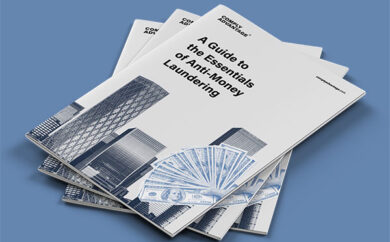

Canada is the second-largest economy in North America, making it a significant economic and political player on the international stage. To pursue its political and diplomatic objectives and punish violations of international law, Canada implements sanctions against a range of countries, individuals, and entities in response to violations of international law or threats to global security.
Given the evolving nature of the sanctions landscape and the potential for significant penalties for sanctions breaches, Canadian financial institutions (FIs) should understand their sanctions obligations and ensure they have a robust sanctions screening solution to achieve full compliance.
Types of sanctions imposed by Canada
Sanctions encompass a broad range of measures restricting economic or political activity. Canada defines its sanctions according to the following types:
- Import and export restrictions: These ban the buying or selling of specific goods from or to a designated entity and are designed to cause economic damage to the targeted country.
- Financial prohibitions: These prevent anyone under Canadian jurisdiction from transacting with or on behalf of designated people or entities.
- Dealings bans: Effectively an asset freeze, a dealings ban prevents an individual or entity from accessing property, money, or other material or financial assets under Canadian jurisdiction. Transactions relating to these assets are also banned.
- Arms embargoes: An arms and related materials embargo bans trading weapons and military equipment with a designated country.
- Technical assistance prohibitions: These go hand in hand with arms and export restrictions and aim to prevent entities targeted by these sanctions from gaining information about banned exports and the exports themselves.
Canada’s sanctions regulations
The Canadian Parliament issues sanctions under several articles of legislation:
- United Nations Act (UNA): As a member of the UN, Canada is obliged to implement sanctions passed by the United Nations Security Council (UNSC). UNA is the mechanism for translating UN sanctions into Canada’s domestic legislation.
- Special Economic Measures Act (SEMA): Besides imposing sanctions multilaterally with the UN, Canada can maintain its own autonomous sanctions regime to cover entities not sanctioned by the UN. Sanctions are applied under SEMA where Canada finds targets have breached international law or committed serious human rights abuses or where Canada has other international treaty obligations.
- Justice for Victims of Corrupt Foreign Officials Act (JVCFO): JVCFO enables Canada to impose sanctions against individual targets rather than states and regimes. Like the US’ Magnitsky Act, JVCFO specifically addresses serious human rights abuses or acts of corruption perpetrated by foreign officials.
To supplement its primary sanctions legislation, Canada has passed several additional laws, or ‘related measures’, allowing it to apply sanctions on a one-off or targeted basis. Examples include:
- Export and Import Permits Act: This requires anyone trading with a country on the Area Control List to obtain a license prior to doing so. This list currently consists only of North Korea.
- Freezing Assets of Corrupt Foreign Officials Act: This allows Canada to implement asset freezes on foreign politically exposed persons (PEPs) if requested by a country undergoing political uncertainty.
- Criminal Code: This allows Canada to sanction terrorist entities not included in the existing UN anti-terrorism regulations.
Non-compliance with Canadian sanctions may result in both financial and criminal penalties. Individuals convicted of sanctions violations in Canada face fines of up to $100,000 and prison terms of one to five years.
Countries sanctioned by Canada
Once designated by the government of Canada, sanctioned countries and individuals are added to the Consolidated Canadian Autonomous Sanctions List. The list includes all targets and measures applied under SEMA, and JVCFO. Entities sanctioned by the UNA appear on the Consolidated United Nations Security Council Sanctions List. As of 2024, the countries targeted by the Canada sanctions regime are:
- Belarus
- Central African Republic
- China
- Democratic Republic of the Congo
- Guatemala
- Haiti
- Iran
- Iraq
- Lebanon
- Libya
- Myanmar
- Nicaragua
- North Korea
- Russia
- Somalia
- South Sudan
- Sri Lanka
- Sudan
- Syria
- Ukraine (relating to Russia’s occupation of parts of the country)
- Venezuela
- Yemen
- Zimbabwe
To counter terrorist financing, Canada also enforces specific measures against terror groups including the Taliban, ISIL, and Al-Qaida. It has also imposed sanctions on several Israeli entities for their role in extremist settler violence in the occupied Palestinian territories.
Canada’s sanctions regime in context
In general, sanctions are most effective when imposed multilaterally, giving targets fewer methods of evading them. Canada’s sanctions regime is no exception to this: its UN membership means it shares much of its sanctions regime with the organization’s 192 other member states, while Canada has also undertaken co-ordinated sanctions action with its geopolitical allies. In 2024, for example, Canada, the US, the UK, and the EU all announced new sanctions on Belarus in response to fraudulent elections and human rights abuses in the country.
However, the existence of co-ordinated sanctions does not mean sanctions lists are identical across jurisdictions. For example, as of September 2024, Canada maintains sanctions against 1500 individuals and 646 entities under the Special Economic Measures (Russia) Regulations. Under the equivalent legislation in the UK, those numbers are 1707 individuals and 339 entities, pointing to material discrepancies in international sanctions lists even where sanctions regimes are strategically aligned. For this reason, FIs should take care to consult in detail the relevant sanctions list in their jurisdiction, rather than assuming compliance with one regime equates to compliance with another.

Taking a layered approach to sanctions compliance
Learn what a layered approach to sanctions compliance looks like in practice, with a discussion on the ever-evolving sanctions landscape from our expert panel.
Watch on demandChallenges for compliance with Canadian sanctions
The current sanctions landscape in Canada, as across much of the world, is high-stakes and subject to frequent change. This creates certain challenges for compliance, such as:
- Evolving sanctions lists: New designations can come thick and fast in the sanctions world. Firms must be able to keep up with these changes to avoid either transacting with sanctioned entities or continuing to restrict those on whom sanctions have been lifted.
- Vigilance against sanctions evasion: Unsurprisingly, designated entities frequently seek to get around sanctions and continue trading and transacting with entities in other countries. They often do this by getting associates to act on their behalf, or by setting up front companies in other jurisdictions with complex corporate structures to obscure their ultimate beneficial ownership (UBO).
- Data coverage and accuracy: Good-quality data is crucial for minimizing firms’ rates of false positives, where innocent transactions and entities are incorrectly flagged as possible sanctions breaches. Sanctions data that includes additional information such as UBO or the relatives and close associates of designated entities, meanwhile, can help firms detect and prevent attempts at sanctions evasion.
How to comply with Canadian sanctions
To fulfill their regulatory obligations, firms in Canada must implement a robust sanctions screening solution. This solution should let them check customer data against the Consolidated Canadian Autonomous Sanctions List and be integrated with parts of their anti-money laundering and countering the financing of terrorism (AML/CFT) program, including:
- Customer due diligence (CDD): During onboarding, firms should conduct customer screening to establish and verify their customers’ identities. This should include collecting information on the beneficial ownership of customer entities.
- Enhanced due diligence (EDD): EDD should be carried out in cases where a customer presents a medium or high sanctions risk, for example if they have a similar name to a designated entity or appear to be concealing their identity or beneficial ownership.
- Ongoing monitoring: Since new targets are frequently added to sanctions lists, businesses should conduct ongoing monitoring to ensure their customer profiles are dynamically updated rather than static.
- Transaction screening: Firms should screen customers’ transactions to detect the involvement of any sanctioned entities, making sure their transaction screening tools are updated with the latest sanctions data.
- Transaction monitoring: Whereas transaction screening assesses transactions as they occur, transaction monitoring reviews transactions that have already been processed. This allows firms to spot any unusual patterns – for example, in a sanctions context, those involving a higher-risk jurisdiction.
- Reporting: Firms should report any financial behavior that may indicate a risk of a sanctions breach to the Financial Transactions and Reports Analysis Centre of Canada (FINTRAC, the Canadian financial regulator) using a suspicious transaction report (STR). Firms must also report monthly to the Office of the Superintendent of Financial Institutions (OFSI).
Smart sanctions screening solutions
ComplyAdvantage’s sanctions risk intelligence combines cutting-edge machine learning with expert manual reviews to create optimal peace of mind for FIs. Firms using ComplyAdvantage’s sanctions screening benefit from:
- Real-time updates: Firms can optimize their sanctions compliance with data taken from all relevant sanctions lists and watchlists, and refreshed using automated systems.
- Data coverage: ComplyAdvantage’s sanctions and sanctions-related data goes beyond the minimum expected by regulators by listing entities sanctions targets own, control, or are related to.
- Advanced matching algorithms: ComplyAdvantage’s matching algorithms reduce false positives by incorporating suitable smart technology tools capable of accounting for variations in spelling, non-Latinate characters, nicknames and aliases, and regional naming conventions. This helps firms reduce the negative customer experiences, alongside the administrative and financial burden, that false positives cause.
Speed up your sanctions screening
Unlock more time by automating your sanctions screening. Book a free demo with one of our experts and see our easy-to-use UI and seamless integration.
Get a demoOriginally published 24 June 2021, updated 04 October 2024
Disclaimer: This is for general information only. The information presented does not constitute legal advice. ComplyAdvantage accepts no responsibility for any information contained herein and disclaims and excludes any liability in respect of the contents or for action taken based on this information.
Copyright © 2025 IVXS UK Limited (trading as ComplyAdvantage).
